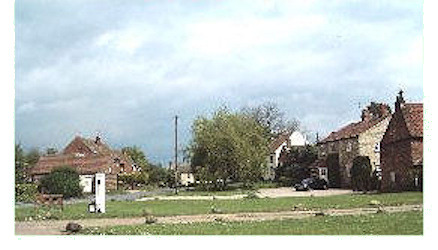Coneythorpe & Clareton
 Coneythorpe is situated in the centre of a part of North Yorkshire which is well known for its beautiful scenery and its interesting market towns.
Coneythorpe is situated in the centre of a part of North Yorkshire which is well known for its beautiful scenery and its interesting market towns.
North Yorkshire is England's largest county with an area of more than 800,000 hectares to explore. The county is fascinating, and no matter what your interest or time to spare, offers a huge range of activities and attractions.
Coneythorpe is in the ecclesiatical parish of Goldsbrough and is part of the civil parish of Arkendale, Coneythorpe and Clareton. It used to be called Kingsthorpe or Coneystrip many years ago.
Technically, the correct name of our village is Coneythorpe with Clareton, according to the Domesday Book. Outside the Tiger Inn is the old pump, which has now been restored, which once was the only source of water for the village.
The name Coneythorpe comes from the Danish/Viking colonisation of Yorkshire in the 10th and 11th centuries. It is derived from the old Danish "Konig-thorpe" or "Koning-thorpe" meaning King's settlement. Although there appears to be is no other Coneythorpe, there is a Coneysthorpe near Castle Howard (the cause of much confusion) and a Coney Street in York, which are thought to come from the same root. Before 1066 it has been suggested that the village was owned by Edward the Confessor and after the Norman conquest passed into the hands of William the Conqueror.
The village was then granted to a William Mauleverer for his part in the Battle of Hastings. The earliest recording of Coneythorpe is in the Episcopal Registers of 1275. In some older documents and maps Coneythorpe is sometimes referred to as Kingsthorpe, but that the name seems to have lost popularity and has long fallen out of use.
Up to the late 1960's all but a couple of houses in (and most of the land around) Coneythorpe and Clareton were still owned by the Allerton Mauleverer estate. The Allerton Estate had since 1805 been owned by the Mowbray and Stourton family, a fact reflected in the names of two houses in the village, Mowbrae and Mowville. The entire village was sold by auction in 1968. Adverts for the auction and newspaper articles about the sale are displayed in the Tiger Inn in the village. One of those articles suggests that it was the ownership of the village by a single estate that kept the village relatively undeveloped. There has been some small, sensitive development since the sale, but Coneythorpe has kept its small size and feel and has since 1997 been designated as a Conservation Village.
Many of the older buildings in the village are constructed of brick and cobble. This construction is also seen in the neighbouring villages such as Clareton, Flaxby, Arkendale, Marton cum Grafton and other villages in a thin band along the edge of the Vale of York. The rounded cobbles, which are made up of a variety of different rock types, are found through the soil in this area and come from the lateral moraine deposited by an ice sheet that filled the Vale of York in the last Ice Age. In the absence of other stone, these cobbles were used in the building of houses, barns and walls.
To strengthen the construction in some buildings, courses of bricks were run through the walls alternating with cobble, leading to a distinctive striped appearance.
See the Coneythorpe Conservation Area Character Appraisal